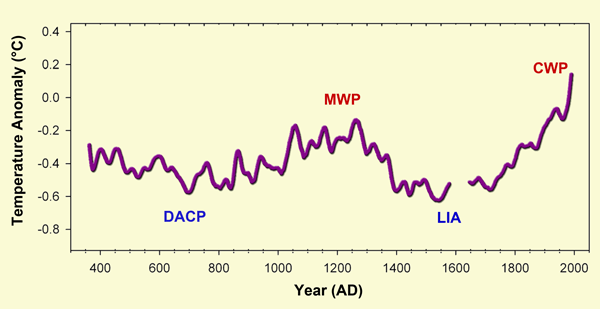Reference
Kellerhals, T., Brutsch, S., Sigl, M., Knusel, S., Gaggeler, H.W. and Schwikowski, M. 2010. Ammonium concentration in ice cores: A new proxy for regional temperature reconstruction? Journal of Geophysical Research 115: 10.1029/2009JD012603.
Description
Kellerhals et al. developed what they describe as "a reconstruction of tropical South American temperature anomalies over the last ~1600 years ... based on a highly resolved and carefully dated ammonium [NH4+] record from an ice core that was drilled in 1999 on Nevado Illimani [16°37'S, 67°46'W] in the eastern Bolivian Andes." This work revealed the presence of warm temperatures from about AD 1050 to 1300 (which they identify as the Medieval Warm Period) -- compared to the preceding and following centuries (the Dark Ages Cold Period and the Little Ice Age, respectively) -- as well as a subsequent rise to warmer temperatures (the Current Warm Period), which in the last decades of the 20th century eventually exceeded all prior temperatures in the record. And as best we can determine from the six scientists' graph of the reconstructed temperature data shown in the figure below, we estimate the peak warmth of the Current Warm Period to have been about 0.27°C greater than the peak warmth of the Medieval Warm Period.

Reconstructed tropical South American temperature anomalies normalized to the AD 1961-1990 average and smoothed with a 39-year Gaussian filter. Adapted from Kellerhals et al. (2010).




